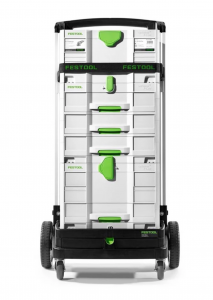 The longer you play ASL, the more ASL gear you accumulate. For some, accumulating ASL gear is almost an end in itself. A lot of ASL stuff will remain in your gaming room most of the time–Festung Budapest is not exactly common tournament fare, after all–where it can be played at your leisure or simply gather dust. But for those of us who go to ASL tournaments and get-togethers, or even go to a friend’s house a lot, there’s a significant subset of your gear that you will need to travel with–including rules, boards, counters, and assorted bric-a-brac like dice towers and tweezers. Thus storing and transporting ASL gear can become a significant issue, especially as that gear grows over time.
The longer you play ASL, the more ASL gear you accumulate. For some, accumulating ASL gear is almost an end in itself. A lot of ASL stuff will remain in your gaming room most of the time–Festung Budapest is not exactly common tournament fare, after all–where it can be played at your leisure or simply gather dust. But for those of us who go to ASL tournaments and get-togethers, or even go to a friend’s house a lot, there’s a significant subset of your gear that you will need to travel with–including rules, boards, counters, and assorted bric-a-brac like dice towers and tweezers. Thus storing and transporting ASL gear can become a significant issue, especially as that gear grows over time.
For my early ASL years, I used plastic bins from The Container Store, moving them around with a collapsible dolly. Eventually, I worked with a local company that makes custom storage cases (for musical instruments, electronics, etc.) to construct a large wheeled storage case for my ASL travel set. It took me a couple versions to get it right, but I then was able to use my case for a number of years. However, as more ASL stuff came out, I ran out of space in the case, so had to carry counters separately, and even the case grew so heavy that I, with my bad back, was having problems getting it in and out of my SUV, or wheeling it long distances. I needed a new solution.
What I decided to try was something I had seen used by another ASLer, Chris Doary of Battleschool fame, at an ASLOK many years ago. He used a type of modular container known as the Systainer. I got the info for them from him back then, as I saw that they clearly had potential, but since I had just gotten my custom case, I wasn’t looking to immediately try something else. However, I kept it in the back of my head all these years and in 2019 decided to give Systainers a try. I bought a number of different types of Systainer, since I wasn’t sure how many I would need, or what types I would like. I organized my ASL gear in them and took them to ASLOK 2019, where they worked like a charm, just as I had hoped. With that experience in mind, I thought I would provide an introduction to the Systainer system from the perspective of an ASL player, with the notion that it might be helpful to other ASLers out there.
First things first. The Systainer system is made by a German company called Tanos; here is their Systainer Portfolio page. They also have a Facebook page and a YouTube channel where they have videos about Systainers. In the United States, Systainer products are sold under the name Festool (they also have a YouTube channel). You can buy products directly from their website. You can also buy Systainers from other places online, such as Toolnut and Systainer Store and Woodcraft. You may be able to find some of them at local Woodcraft stores as well. Naturally, you can also find them on Amazon, too, though it can be a little more confusing.
The Systainer system is a modular system of plastic containers of different sizes and configurations. Some are just bins, some have drawers, some have compartments. Some are combos. Because they are modular, they all stack neatly on top of each other and can be latched together. You can choose which ever types and quantities of Systainers you want to build your perfect storage system. And you can expand the system simply by buying more Systainers. The plastic is durable (but heavy). You can easily buy replacement handles, latches, and other components, should something break or be lost.
The original Systainer containers debuted in the early 2000s; these designs, which are still sold, are now called “classic.” They latch together at the front and back corners at the tops and bottoms of the containers. Some years later, a second line of Systainer containers debuted, called the “T-Loc” system. These containers have a single latch, in the front center, which also serve as latches for the lids of any bins (watch some of the videos; you’ll see). “Classic” and “T-Loc” containers are compatible with each other, but only to a point. You can place T-Loc containers on TOP of Classic containers and they will fit snugly and latch together, but you cannot do the same with T-Loc containers on the bottom and Classic containers on the top. So this means that all of your Classic containers must be on the bottom of any stacks or dollies that you have. This can occasionally be a minor inconvenience, depending on how you want to arrange your gear, but it is nothing major.
Systainers are mostly sold in two colors: white and black (“anthracite”). However, they can be made in a variety of other colors (as can the latches and handles). Some of these other colors you can find on Amazon, or you can order an entire set of whatever containers you want in whatever colors you want if you do a custom order from the Systainer Store or direct from Festool. If I had known what cases I needed, I probably would have done that, but I didn’t know in advance and was too impatient to wait; I just got the basic colors from Amazon, since that was quick.
Systainers were originally designed mostly for tools, so some varieties of Systainers (such as one with an air compressor inside!) are just not relevant to ASL, while others will probably not be useful to most people. I have concentrated here on the items that I thought were theoretically most useful for ASLers, but you may want to take a look sometime at all the Systainer items in their catalog (starting on page 30).
I personally am currently using the following items for my travel ASL gear: 2 x T-Loc “Sys-Combi III”, 1 x Sortainer T-Loc “SYS-Sort IV/3”, 1 x Racktainer Systainer SYS IV, and 1 x Sys-Roll Systainer Cart. However, I have other types of Systainers as well. I am only using them for my travel gear, but there is no reason one couldn’t store much of one’s home gear in these as well, although plain shelves are probably best for lots of historical modules, etc. I will talk more about my own gear later.
The first type of Systainer to be aware of are the basic T-Loc Systainers, sometimes called empty Systainers. These are basically plastic boxes with lids. The Sys 1 box is the shallowest, with the Sys 2, Sys 3, Sys 4, and Sys 5 Systainers becoming incrementally deeper (such that a Sys 5 is more or less five times as tall as a Sys 1). Items would have to be stored flat in the shallowest Systainers, while rulebooks or other items could be stored standing in the deepest ones. Sys 4 and Sys 5 Systainers are also deep enough to vertically store cut sheets of plexiglass. Overall, however, I did not find the basic Systainers as useful as some of the other types–however, depending on what you have to store and how you like to store it, you may very well like having one or more of these. I will note that the way they latch together allows you to open a bin in the middle without having to take off the bins stacked on top of it–you just have to make sure they don’t spill over backwards.
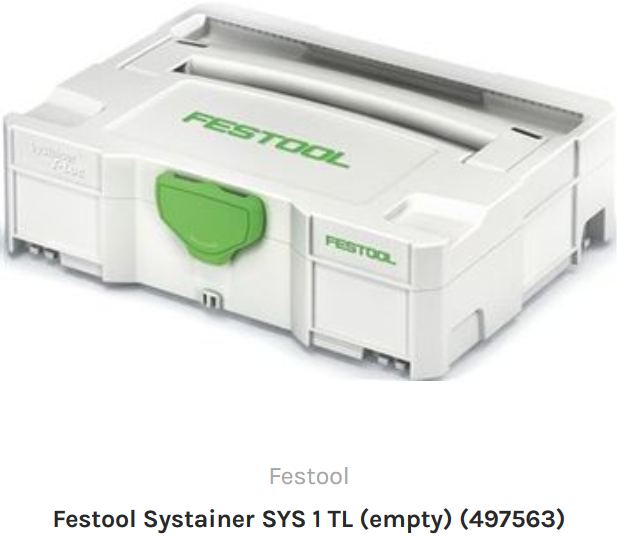
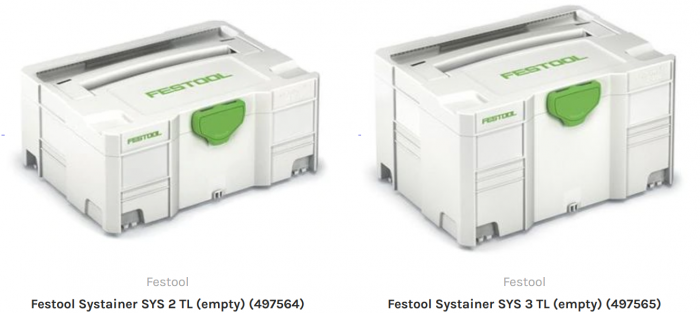
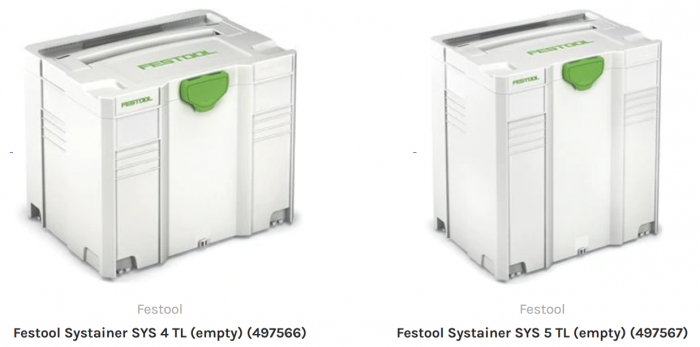
Next up are the so-called Sys-Combi containers, which come in two flavors: the Sys-Combi II and the Sys-Combi III. Each of these includes one top-opening bin on the top and a front-opening drawer on the bottom. The Sys-Combi II combines a SYS 2 T-Loc systainer with a drawer and the Sys-Combi III combines a SYS 3 T-Loc systainer with a drawer.
The drawer comes with two removable dividers (you can also get additional dividers if you want more than three compartments). I removed all dividers from mine so I could have simple drawers. Pictured below are some images of the Sys-Combi II.
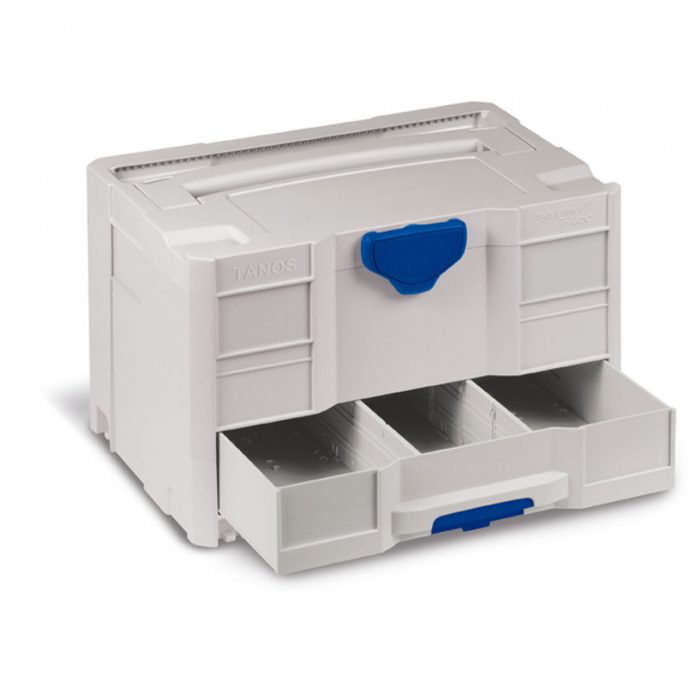
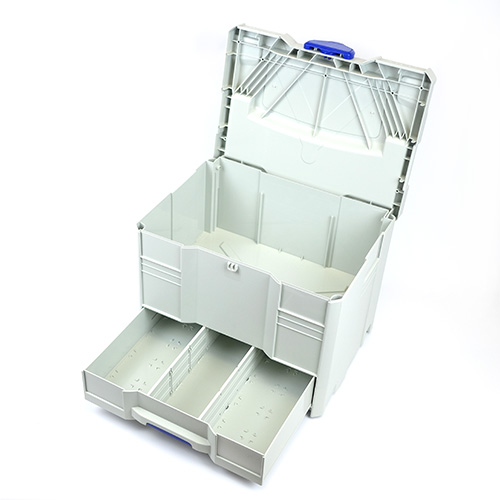
Here are a couple images of the Sys-Combi III, including one in “anthracite.” I am currently using two of these.
In my storage set, I use the bin of one of these to store unmounted boards, cut in half. I use the bin of another to store my dice tower, my special info counter tray, my wooden box (with dice, tweezers, stickum, thread, OBA cards and other tiny items), my wooden HIP-hider, my Oregon laminator counter-clipper, my shelf-liner, and other odds and ends. One drawer contains three bound rulebooks (one the softbound ASLRB, one a hardbound rulebook with all the early historical modules, and one a hardbound Chapter H rulebook). The other drawer is for scenario booklets, recent packs and other travel scenario storage.
The different uses for these are endless, depending on exactly how you like to store your gear.
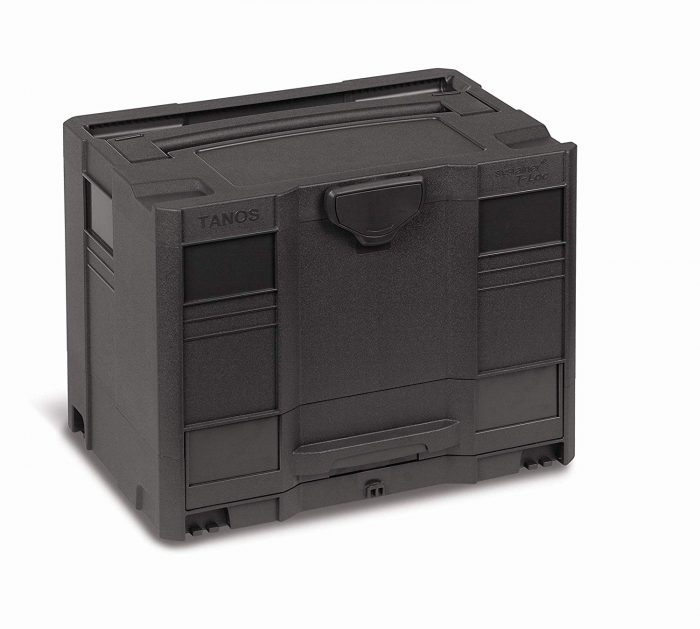
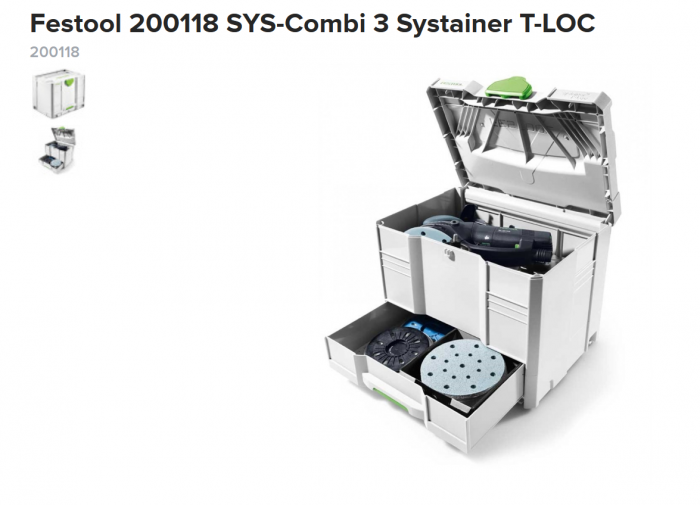
Next up is the three-drawer Sortainer T-Loc “Sys-Sort IV/3,” a catchy name if there ever was one.
This container is the size of a Sys IV or a Sys-Combi III but contains no top-opening bin, only three front-opening drawers. Again, the drawers come with dividers, but these can be removed. There’s no end of things that can be stored in these drawers: boards, scenarios, overlays, rules, play aids, etc. I currently use one of these. In one drawer I have third party boards, plus desert boards and beach overlays. In another drawer I have overlays. In a third drawer I have charts, tables and play aids.
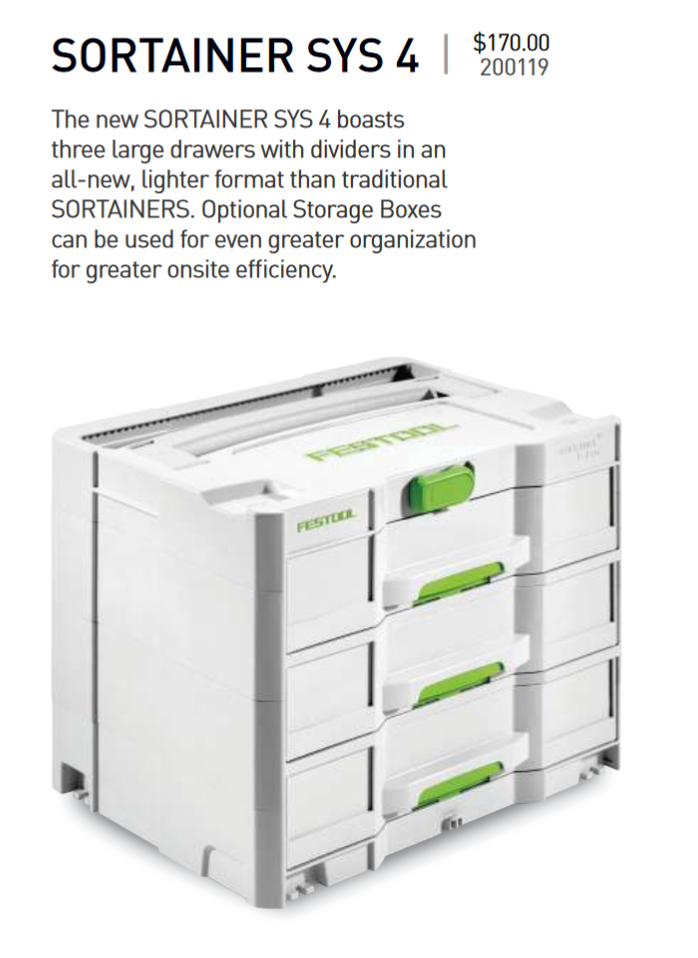
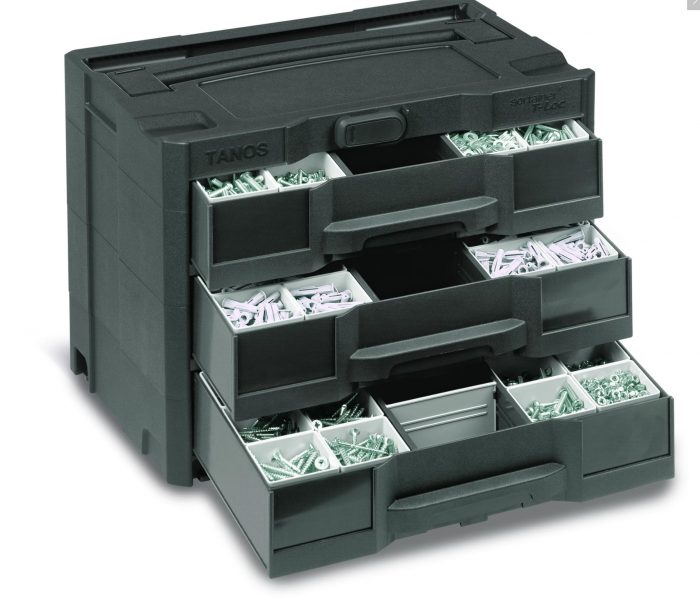
Let’s pause and take a second to see how these things looked stacked. Here is a stack of two Sys-Combi IIIs (on top and on bottom) and one three-drawer container (in the middle). Again, it is possible to open the bin at the bottom without having to take off the other two containers, as long as one is careful.
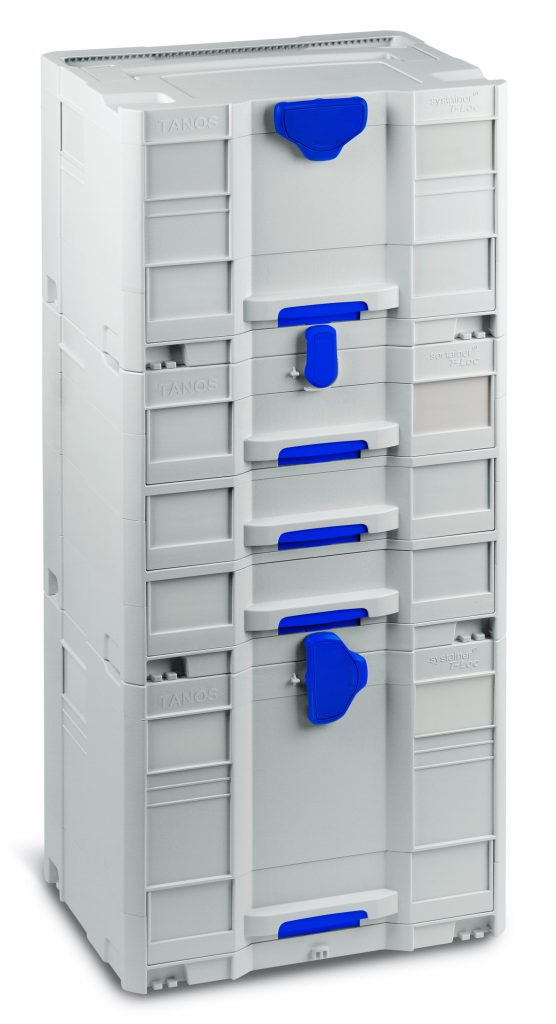
There’s one more type of Systainer that I am currently using. It is called the Racktainer Systainer SYS IV (you might also see it called a Racktainer Sortainer or a Sortainer Racktainer) and contains four pull out plastic containers. I use it, and it is of interest to ASLers, because this container is deliberately compatible with RAACO trays, the counter-storage system beloved by many ASLers. If you swap out the trays that come with it for four RAACO trays basically functions as a RAACO Handy Box Storage System, except that it is modular and stackable with other Systainers.
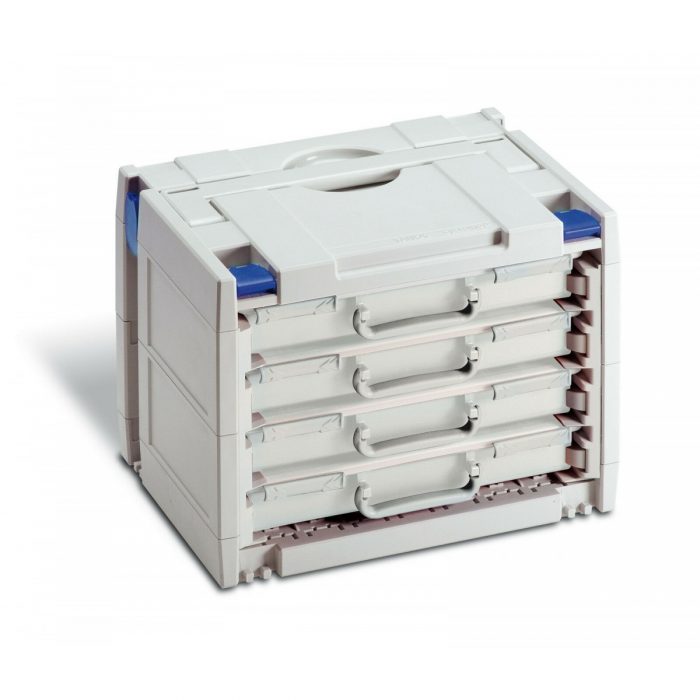
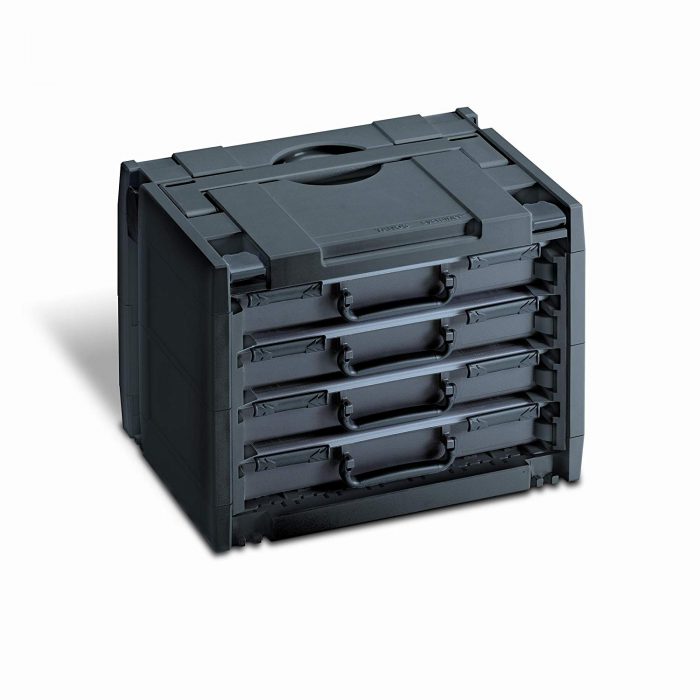
Now I should note that the Racktainer is a “classic” Systainer, which means that it must be at the bottom of any stack (other classic Systainers could still be below it), because it will not stack properly or be able to be locked to a T-Loc Systainer. However, T-Loc systainers can be stacked on top of, and locked to, the Racktainer. A full Racktainer seems slightly heavier than a full Handy Box.
Briefly, I will mention some other Systainers that I think are somewhat less useful than the ones above, but could still be quite useful to some ASLers. Below, in addition to the Racktainer, are other Sortainer variants, each of which have some number of small compartments. The two options with the large drawers are probably most likely to be useful to ASLers, as opposed to the ones that are all small compartments. Note that these are all “Classic” Systainers, so have to be stacked on the bottom of stacks that also have T-Loc systainers.
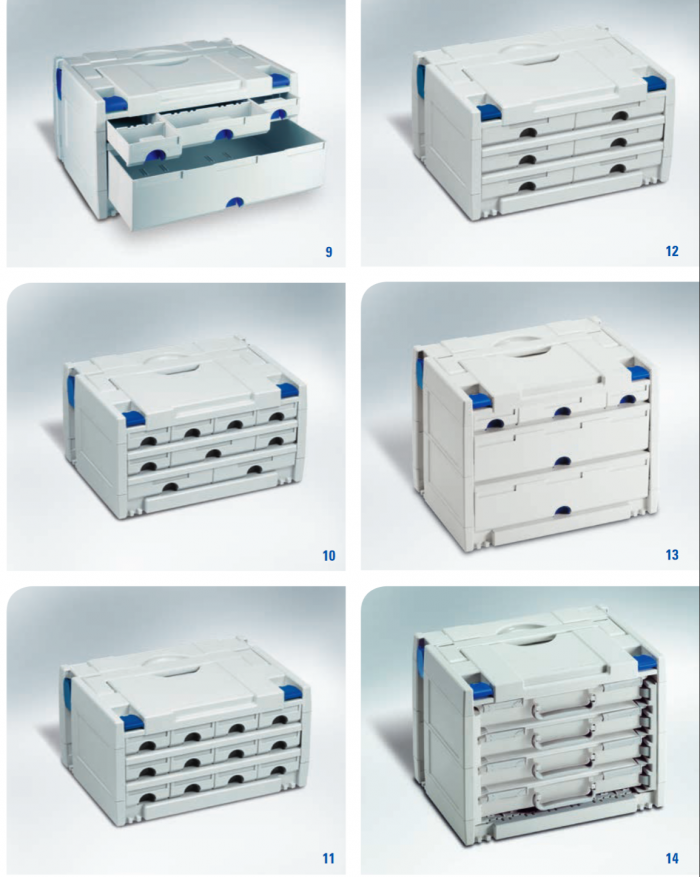
In addition to all of these, there are two larger types of Systainers. The first are MIDI-Systainers, which are the same height and depth as standard Systainers, but not the same widith. It is 10 centimeters wider than all of the above Systainers. MIDI-Systainers can stack with other T-LOC systainers but are not compatible with “Classic” Systainers. They only come in a couple of varieties and do not seem to be very popular.
Then there are the MAXI-Systainers, which are even larger. Basically two regular-sized Systainers could stack sideways on one MAXI-Systainer. It looks like these could store unfolded unmounted boards.
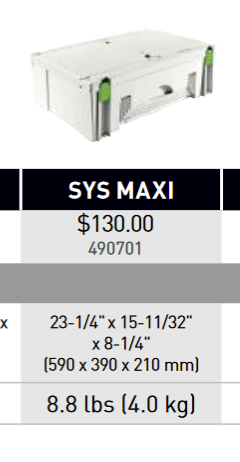
Finally, among the specialized Systainers, there is a single one worth mentioning: a Cooler Systainer! Now you can drink beer or pop from a container that fits with all your other ASL gear!
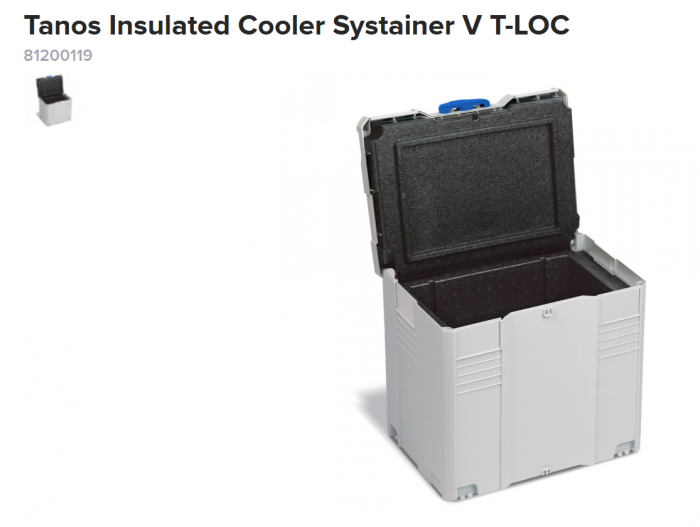
Okay, you have a bunch of Systainers. How do you schlep them around? You could carry them (each one comes with a handle), or you could put them on dollies or hotel carts, or anything like that. However, there are also two solutoins just for Systainers, one of which is excellent. The non-excellent one is just a simple cart bottom (see below). You stack Systainers on them, then push them around. This is more suited to a single room than really being mobile, though. You can’t take stairs and the little wheels will have problems with all sorts of surfaces and obstacles.
A better solution is the custom Systainer dolly known as the SYS-Roll. It is built of plastic but so far seems to be quite durable and is designed for “Classic” and/or “T-Loc” Systainers, which fit neatly into its recess. A strap comes with the dolly to hold everything in place. The SYS-ROLL even comes with its own built-shelf for a bit more storage! The large back wheels make stairs pretty easy, while the smaller front wheels are swivel, making the SYS-ROLL very maneuverable (they also have brakes). On a smooth surface, you can simply push the SYS-ROLL while it remains vertical; on other surfaces you can push or pull it at an angle like any other dolly. I found it very easy to get my stuff around using the SYS-ROLL.
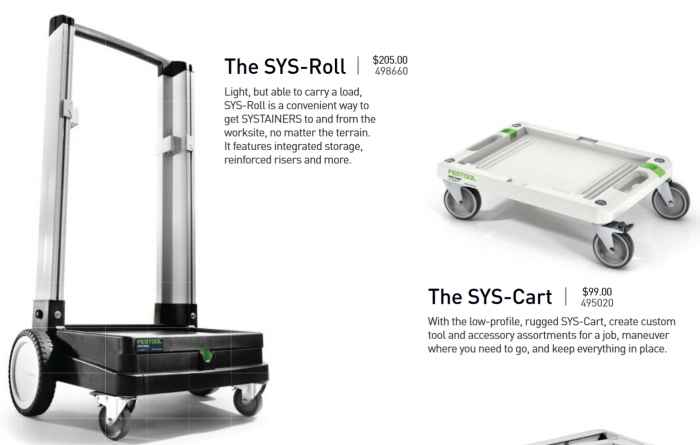
Overall, I think the Systainer system is a very solid method of storing and moving ASL gear. It is sturdy, practical and infinitely configurable and expandable. You can select your own perfect custom configuration based on how you personally like to organize your ASL gear. The system only has two disadvantages that I can see: 1) it is somewhat heavy, although the fact that you can always de-stack things and move them individually (like into or out of an SUV) makes up for it; and 2) it is not cheap. There’s no getting around the latter. But it should last a long time–and you can always use your Systainers for tools if you tire of them for ASL!
I suggest you look at some of of the videos, catalogs and links I have provided. This is something you may want to explore for your ASL stuff.
Wow! That post takes “informative” to the next level. Many thanks, tho I’m reassured by my disinclination to attend tournaments, as a quick browse of the site confirmed your caveat … man they are expensive.
A real pleasure to read a new post. Thanks.
JM
Very impressive. I use Raaco boxes, but your system is close to perfect!
Kudos!
Ron
Mark
Thank you for the informative post.
I’m sure I’m alone in my curiosity to see how you actually store counters in these containers. Any chance you would share pics showing how you store the Soviet or German forces for example? I find the plethora of units makes for quite an organisational challenge when trying it draw the line between easy retrieval of specific units vs. having too many individual compartments.
All the best,